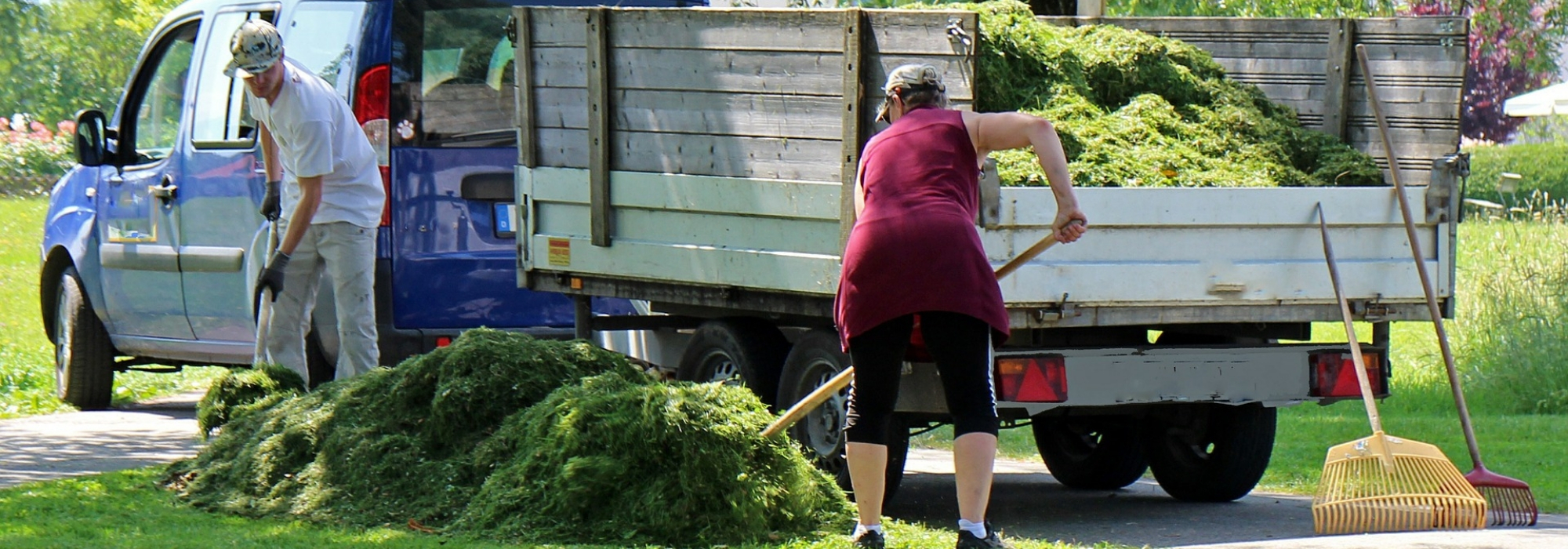
Garden waste: recycling solutions for the garden
our tips to turn green waste into a resource
Contents
Green waste, or plant waste, quickly accumulates to a large volume in the garden. Grass cuttings, hedge pruning, tree pruning, weeding and border maintenance… the garden continuously produces waste and collection methods are changing. Home collection is now rare and many recycling centres even restrict access. All the more reason to recycle plant waste on-site in the garden!
Composting is well known but here are several other ways to make the most of your green waste in the garden… along with answers to the most frequently asked questions on the subject.
Grass clippings: mulching or using as mulch
In spring and autumn, regular mowings produce large volumes of cut herb. The simplest solution then is to practise mulching (we tell you more about this technique in this article: “All about mulching, another way to mow”).
However, if you do not want to use this technique or are not equipped for it, herb can easily be used in the garden and vegetable patch as mulch. Be careful though: this is not a matter of dumping the contents of the mower collection box at the base of trees or borders! A pile of fresh herb ferments and inevitably turns into a slimy, foul-smelling tapetum.
To be used as mulch, herb must:
- be dried beforehand (in windrows, on a large sheet, for example)
- or be laid down in thin successive layers, which will allow it to dry in place.
My tip: I sometimes see piles of mown herb in gardens… Avoid this practice: on one hand, it does not smell good and, on the other, you will add nitrogen massively to that spot. Result: nettles and brambles will eventually take hold… which is not necessarily desirable!
And in compost bin?
Herb can also be composted but only in small amounts and taking care to balance the input of “green matter” with “brown matter”.
To learn all about composting, follow our advice: “Successful composting in 5 steps”
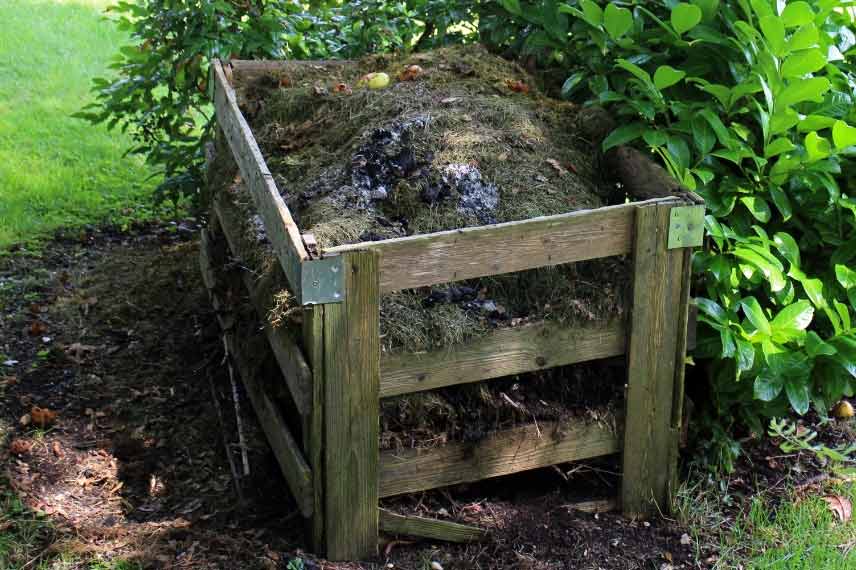
Compost is not a “garden dustbin”! Inputs must be balanced
Read also
How to make good leaf mould? - tutorialHedge and bush pruning: cutting, shredding, mulching
Anyone with evergreen hedges that need one or several prunings a year knows it: bushes often produce enough to fill several trailers bound for recycling centre. Yet it is possible to recycle them in the garden and use them as mulch.
To recycle prunings, several options are available :
- Leave residues directly at base of hedge as mulch. This option is only possible if you prune regularly: branches must be of fairly small calibre.
- Shred prunings using a shredder. This solution requires some patience if you only have a machine aimed at amateur gardeners… but it is very quick when using high-performance equipment. Consider hiring or buying jointly with neighbours!
→ Read on the subject: BRF (ramal wood fragments) — what is it and how to use it in the garden and Garden shredders: uses, different models, how to choose
And what about the compost bin?
Pruning waste can easily be added to compost; it is balanced material, but should first be shredded or at least cut into small pieces to ensure rapid decomposition.
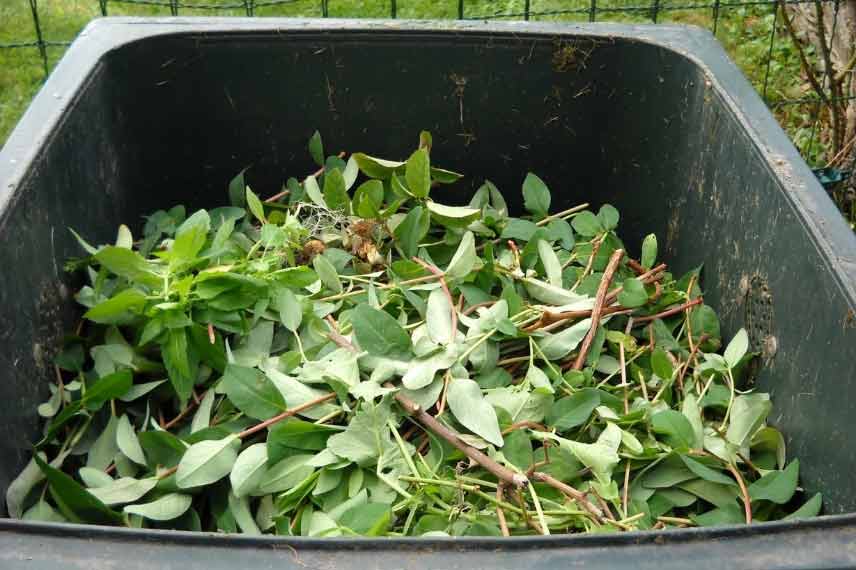 Hedge and bush prunings deserve better than recycling centre — recycle them!</caption]
Hedge and bush prunings deserve better than recycling centre — recycle them!</caption]
Thick branches: multiple uses
Pruning or felling trees produces large-diameter waste. What to do with this wood?
- If you have a stove or a fireplace, cut into logs, leave to dry for at least two years and use this wood to heat your home or, at least, to start the fire! Be careful, however, with resinous species; not all appliances can burn them.
- If you practise permaculture, leave this wood to decompose: it can be used to build new mounds.
- Large, straight branches can also be used in the garden to make stakes, supports (acacia, hazel) or to build structures for climbing beans or peas, fascines (hazel, willow), wattle panels, trellises. Elder branches, being hollow, are also ideal for making small insect shelters.
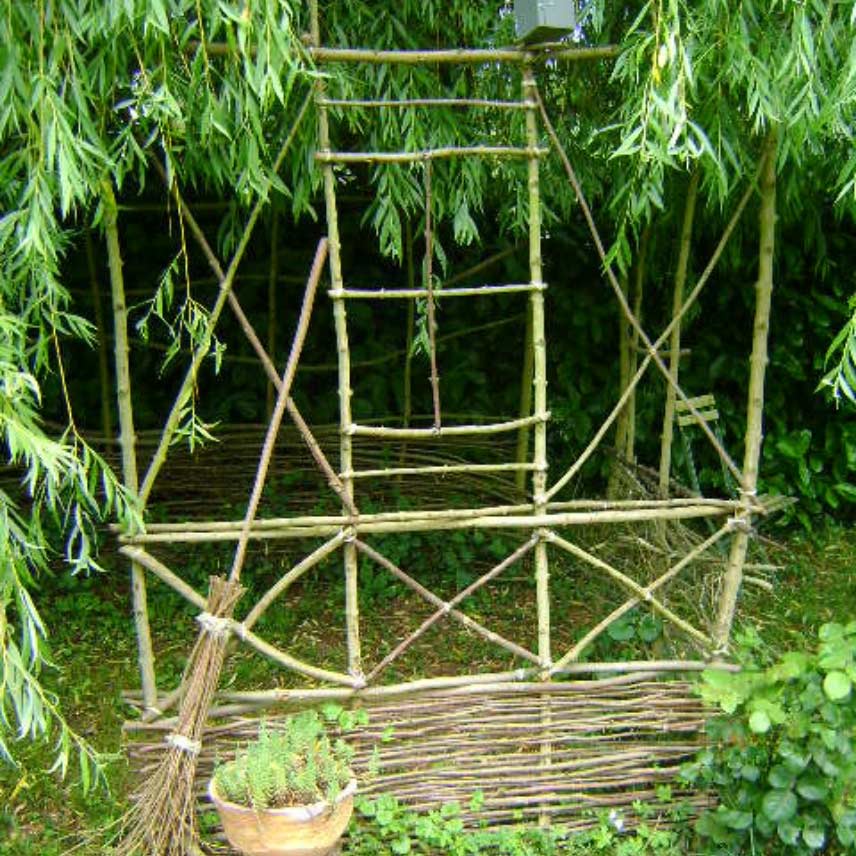
Pruning residues can be used to form small structures, as here, a hut beneath a willow. Photo: Jean-Christophe AUMONT
And in the compost bin?
Obviously not… unless you have a powerful shredder capable of handling very large branches. In that case, it will be a good source of carbon!
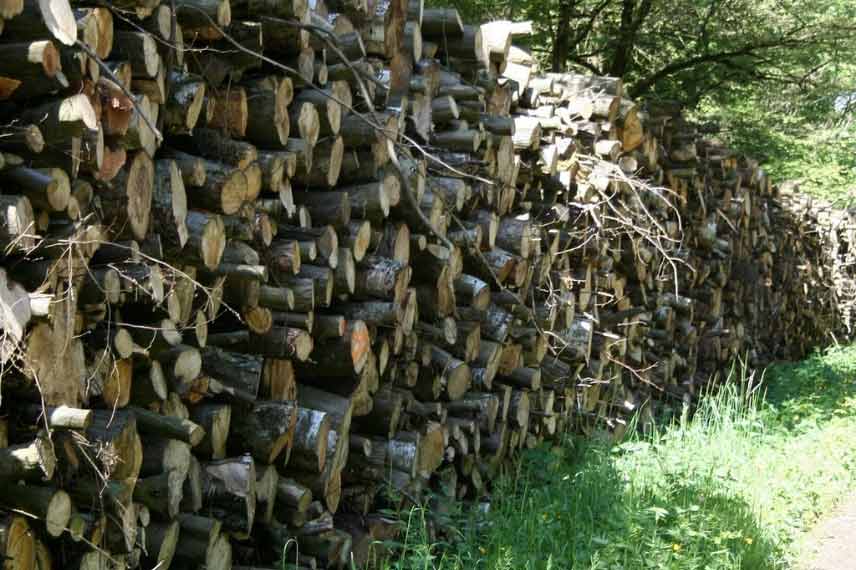
Remember, wood is the only fuel that warms you three times: when you cut it, when you store it and when you burn it!
Clearing debris from flowerbeds, weeds
In spring or autumn, during major weeding and cutting-back sessions, borders also provide their share of waste. It is this waste that causes most concern because it is often “soft” and decomposes quickly.
During work, you can perfectly leave it in place as mulch.
To keep it looking tidy, two options :
- cut them with pruning shears into small pieces,
- gather them and shred them with lawnmower, fitted with its collection box.
My tip: if you have many grasses in garden, don’t hesitate to take out hedge trimmer and work from top to bottom to chop their leaves into small pieces. Leave in place, your border is mulched! This method isn’t exactly conventional, it may surprise neighbours but it is quick and effective… and also works on large perennials.
And in compost bin?
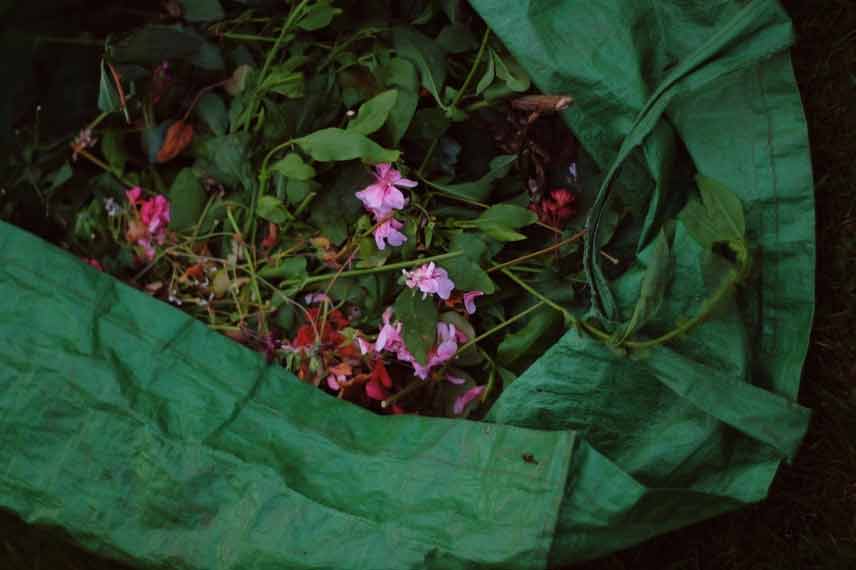
Borders’ waste can easily be put to good use, as mulch or compost
All this waste is easily compostable, so don’t hesitate, but cut it into pieces and avoid adding adventive plants that have set seed. If you have bindweed, leave it in sun for several days to be sure roots are dead.
Dead leaves: mulch, potting compost
A true treasure for the garden, dead leaves are very easy to recycle. We’ve already talked about them… I therefore invite you to read these two articles:
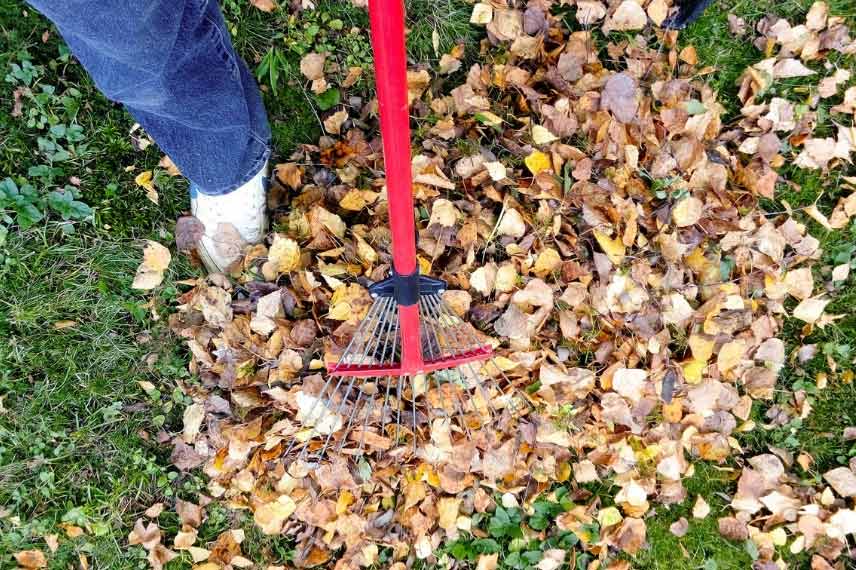
Dead leaves, an excellent mulch for borders and also for the vegetable garden in winter
Bonus: green waste wall or palisade, an excellent alternative to a compost heap
Let’s be honest, recycling green waste takes time… That’s why we’re often tempted to pile it up in a heap at bottom of garden and wait for it all to decompose. It’s not very pretty and patience is required, lots of it…
Another practical and eco-friendly solution exists: green waste wall or palisade.
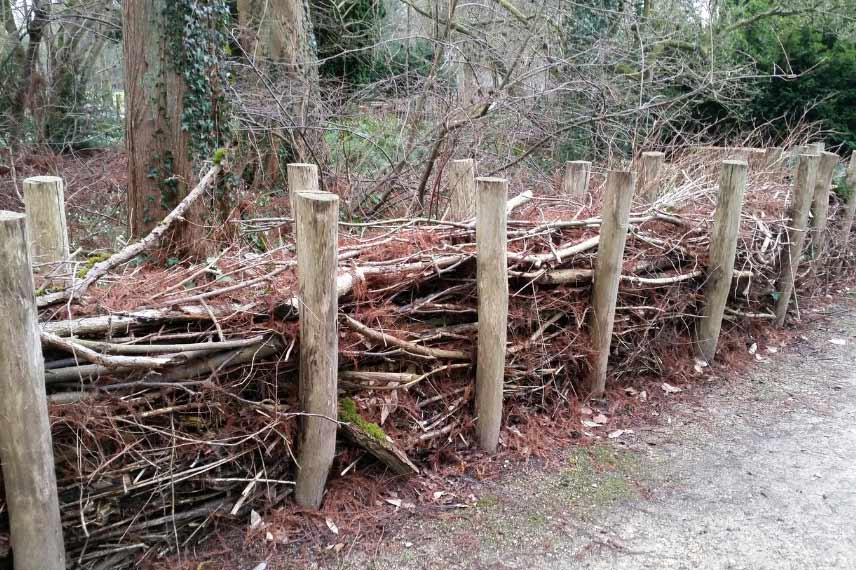
Green waste palisade: an alternative to composting and shredding
To make a green waste wall:
- start by driving sturdy stakes about 1.8 metres high every 60 cm in two rows spaced 40 to 60 cm to create a wall of desired length
- gradually fill wall by layering, mille-feuille style, branches, dead leaves, pruning residues from perennials or from vegetable garden…
Green waste will gradually break down but wall will be continually rebuilt as you add to it. A genuine refuge for insects and wildlife, it will also harbour many beneficial species that will help keep garden in balance and protect it.
Frequently asked questions about green waste
1) Can you burn green waste
No, except in rare cases, it is prohibited and this for several reasons:
- it causes pollution,
- it can start fires,
- odour is unpleasant for neighbours.
For your information, this offence can be punished by a fine of up to €450.
2) Is it permitted to dump green waste in nature?
No! Just because green waste is natural does not mean it has no consequences, especially if it is dumped in a natural medium where it can alter conditions (massive nitrogen input). Furthermore, you risk introducing an invasive species. Finally, it is a matter of civic responsibility! For your information, green waste is treated as regular waste. The fine can be up to €450 and €1,500 if the waste was transported in a vehicle.
3) Are there companies that recycle green waste?
Yes, there are companies specialised in valorising green waste but their services are reserved for local authorities and businesses. Do not count on them to get rid of your green waste! However, some landscapers may offer removal services for your waste for a fee, and you will, of course, be the one to pay.
- Subscribe!
- Contents
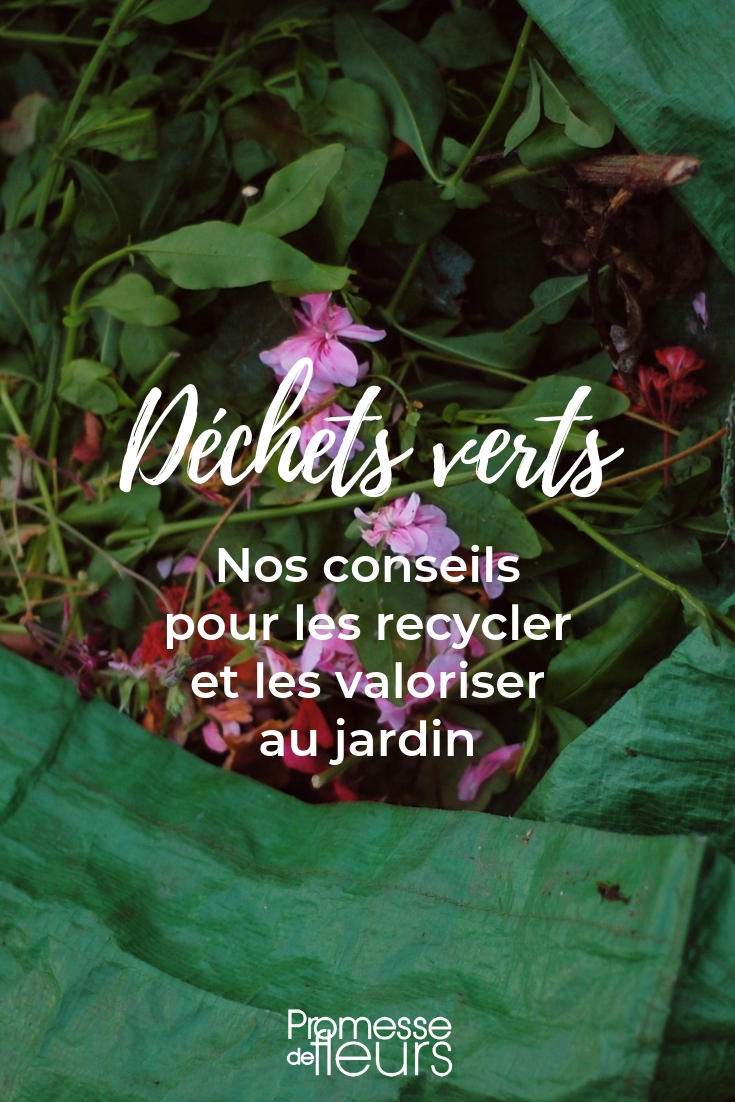































Comments